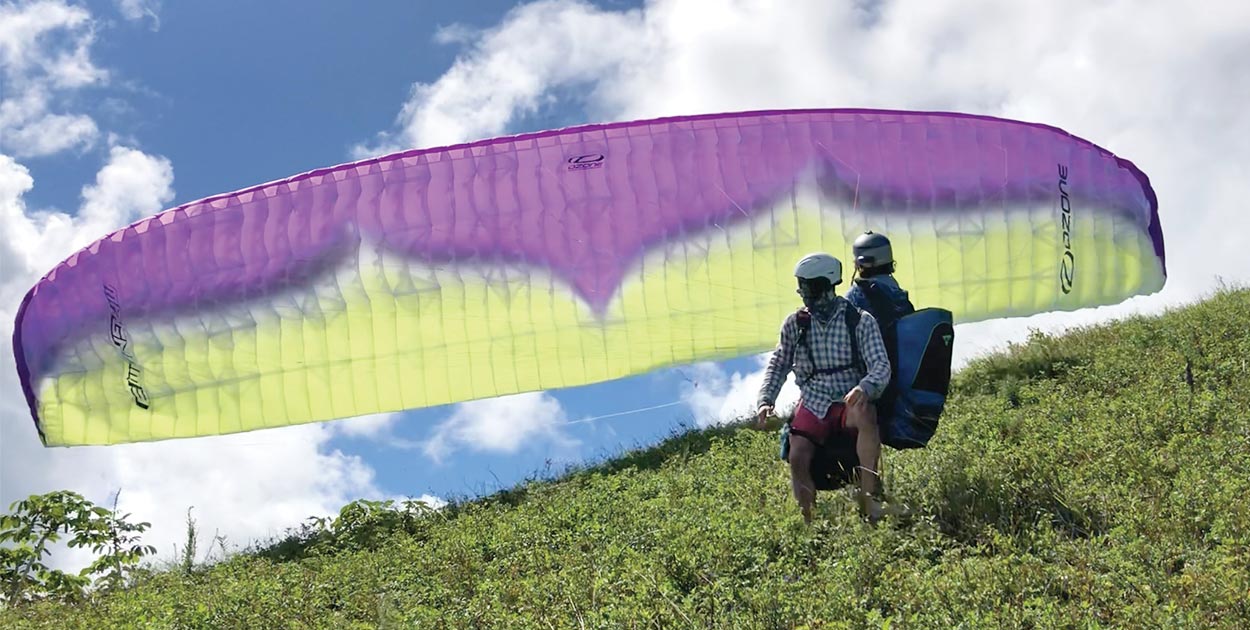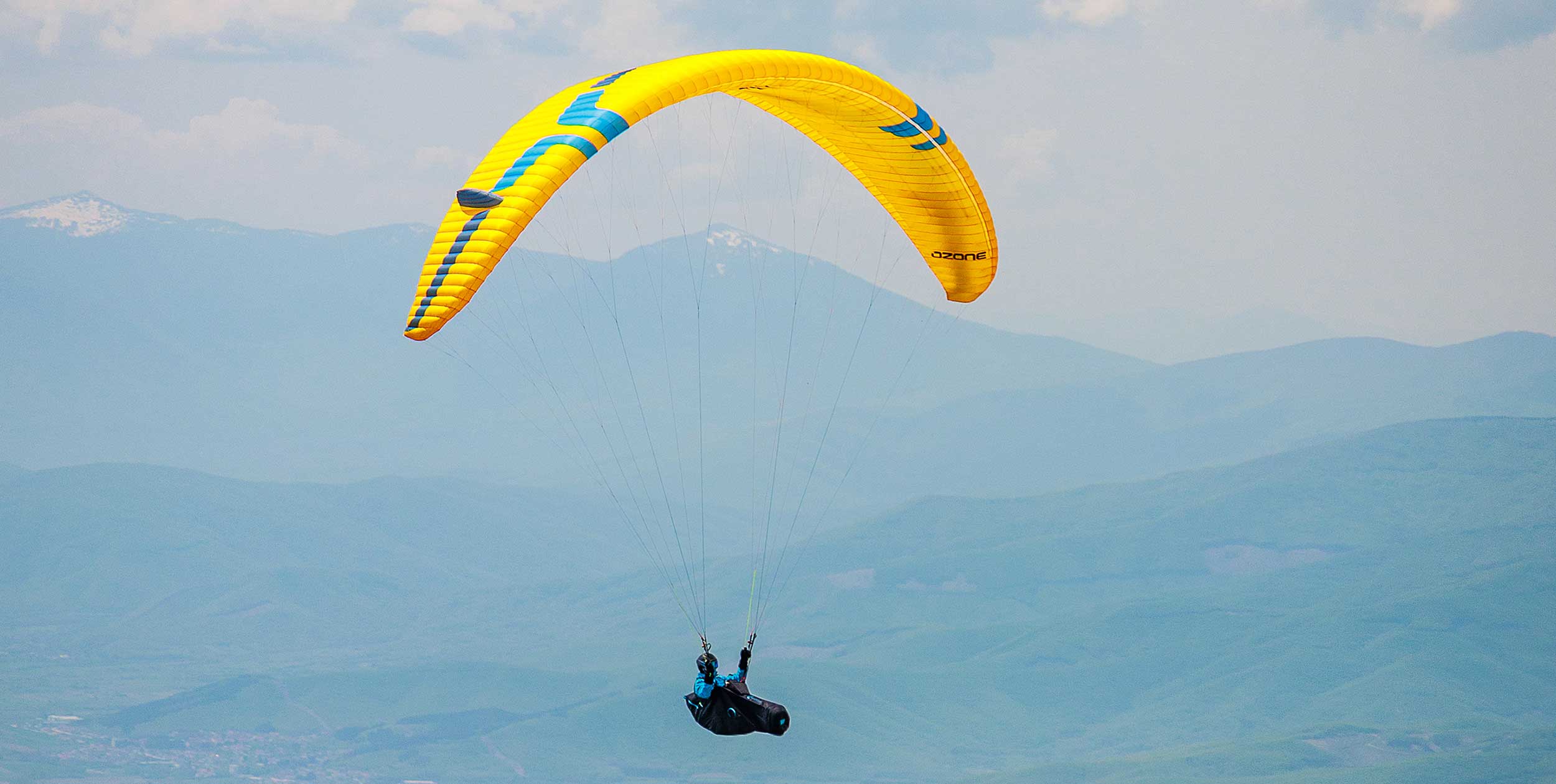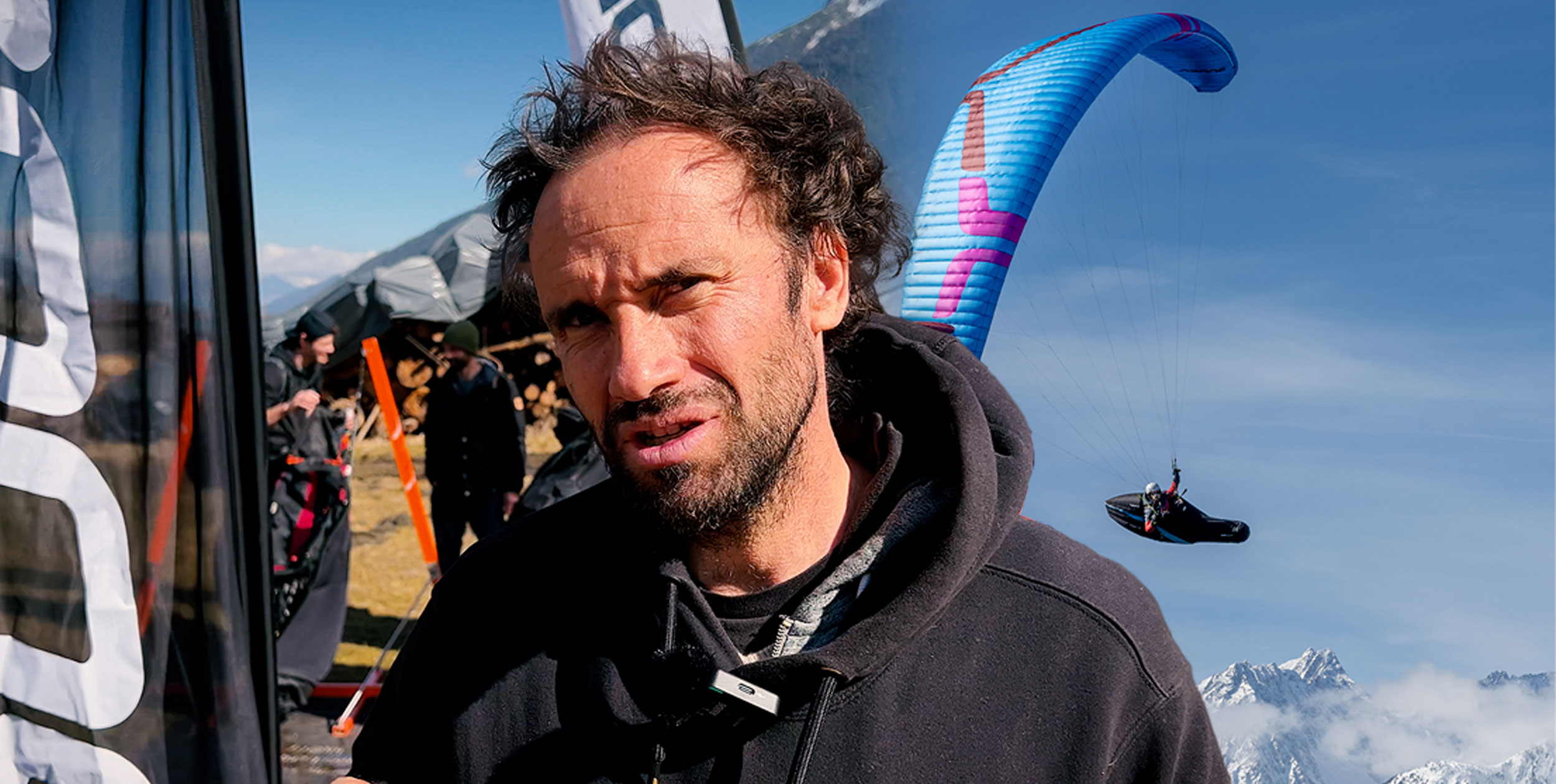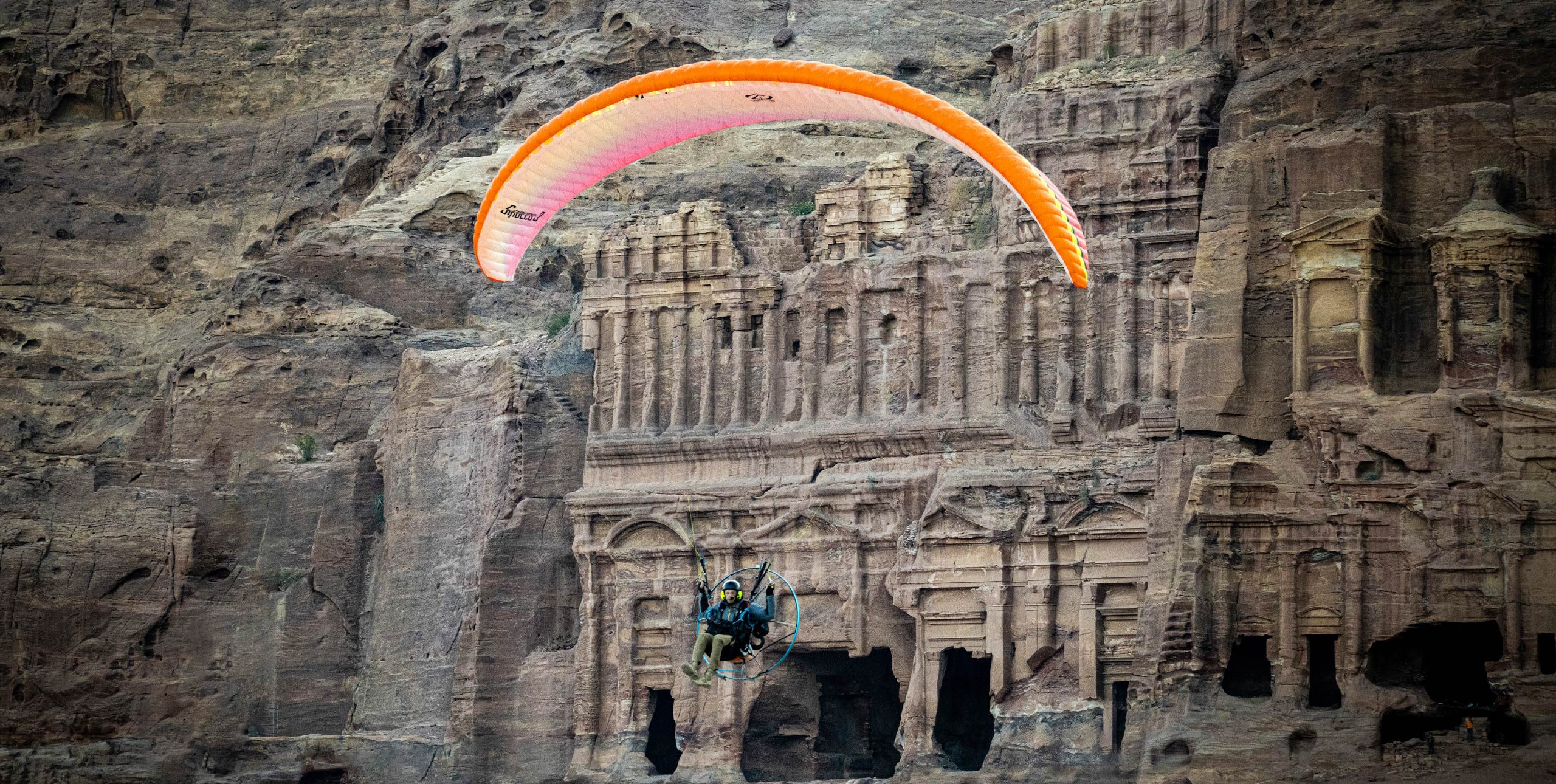
Professional tandem pilot Seb Ospina spends a season with this tandem wing.
The Magnum 3 is Ozone’s answer to the increasingly competitive market for tandem gliders that are safe, easy to launch and land, durable, and fun to fly. Having flown its predecessor, the Magnum 2, for over 800 flights, I was intrigued to see how much they could improve the glider.
The Magnum 3 has been designed specifically for professional pilots and is certified EN B. According to Ozone it is a completely new ground-up design. They have worked on the internal structure to save weight – the glider is a total of 700g lighter than its predecessor.
On the outside, the aspect ratio has not been increased. With ease-of-use and passive safety uppermost in mind, Ozone say there have been “no compromises” in comfort or safety. Performance gains come from a cleaner leading edge, say Ozone, an optimised line layout that has led to a 13% reduction in drag. The result is “improved glide ratio and minimum sink”.
Lighter overall weight means the launch behaviour should be better. A new arc and tension straps have “vastly improved” the handling, making it “beautifully balanced” in the air. Brakes are designed to be “light and precise.”
A primary focus of the designers was to develop a “powerful and easily accessible flare” with no special landing technique needed. The claim is that “even with novice passengers at maximum load in imperfect conditions, the Magnum 3’s landing is simple.”
Launching
I first flew the glider in summer and autumn conditions in Interlaken, Switzerland, where I work as a tandem pilot. I then took it to the Valle de Cauca in Colombia for a season of XC coaching. Overall I had about 300 flights on the wing, mainly commercial tandems, but also some cross-country flying of up to 80km.
When launching for the first time the first impression I got was how soft the A-risers felt when pulling them, and how easy and progressive the brake travel is. If you come from other tandems with more direct handling like the Advance Bibeta 6 and the Gradient BiGolden 3, it takes a bit of time to get used to piloting the Magnum 3. When taking off, the sail comes up easily and straight with a slight shoot, which is easy to correct. It requires very little speed to lift you up.
Landing
The landing is how it should be on a top, modern tandem wing thanks to its flare capabilities. This is a very clear improvement compared to its predecessor.
Ozone recommend launching and landing with trimmers fully-on in most conditions. I personally prefer to land with the trimmers slightly off for a longer swoop and flare.

Handling
The glider is a good all-rounder with excellent take-off, landing (flare) and handling. The light brake pressure certainly makes the job less physical and easier to endure, especially for spots where it is mainly top-landing.
Compared with the Magnum 2 there is improvement on every aspect, including a weight reduction of 700 grams. However, it’s still about 700g heavier than the BiGolden 4 and the Bibeta 6.
In thermals, what I liked is how the glider does not have a tendency to dive but stays overhead. You can crank it up and make it turn really tightly without losing too much on sink rate. The responsiveness is more progressive than other tandems, but you get used to it. And because of that it’s not that physically demanding to fly.
Big ears on the Magnum are very stable, which is important when your passengers are feeling scared or motion sick.
On XC
I also had the chance to use the Magnum 3 while XC coaching in Valle del Cauca. Keeping up with clients on high Bs and Cs was not a problem, so long as full speed was not required. After many hours flying side-by-side with Pál Takáts on his Ozone Swift Max (“A high performance XC machine for personal tandem adventures,” EN C), the main difference was top speed and glide-at-speed in favour of the Swift Max. Climb, trim-speed and glide were almost equal on both gliders.
Conclusion
The Magnum 3 is a clear improvement against its ancestor and a worthy competitor in its class. Its easy take-off, descent and landing capabilities make it incredibly work-friendly, while it is still pleasurable to fly XC thanks to its decent glide and great handling.
MANUFACTURER’S SPECIFICATION
Ozone say: “The professional’s choice for pilot pleasure and passenger comfort”
Use: Regular tandem flying
Pilot level: Regular or professional tandem pilots
Flat area (m2): 38.2 and 41.2
Certified take-off weight (kg): 110-185, 130-220
Glider weight (kg): 7.26 and 7.69
Cells: 54
Flat aspect ratio: 5.2
Certification: EN B
Originally reviewed in Cross Country Magazine issue 199 (May 2019)
To stay up to date and read our reviews first, subscribe to Cross Country











